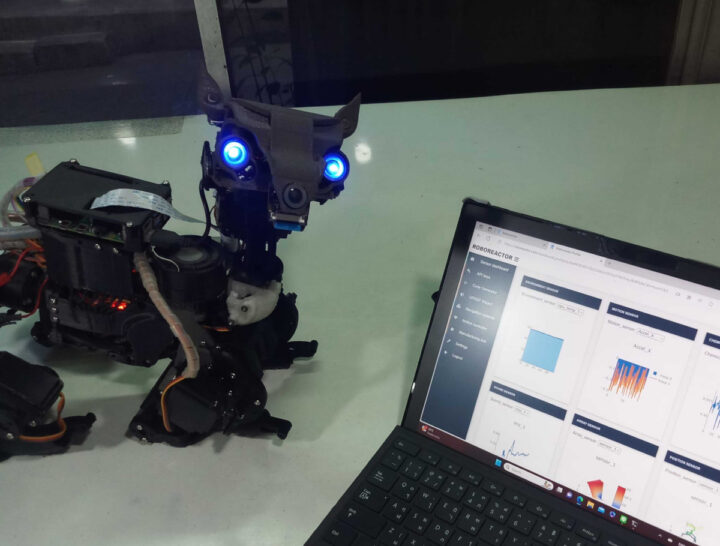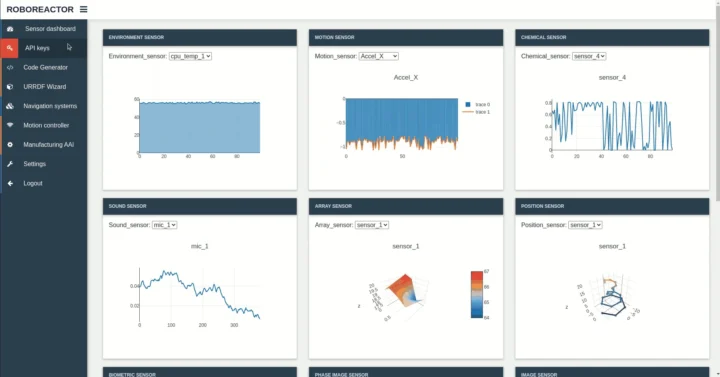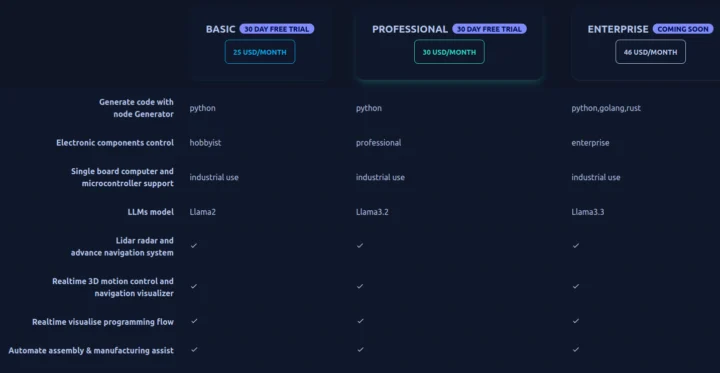Roboreactor is a web-based platform enabling engineers to build robotic and automation systems based on Raspberry Pi, NVIDIA Jetson, or other SBCs from a web browser including parts selection, code generation through visual programming, and generating URDF models from Onshape software. You can also create your robot with LLM if you wish.
The first step is to create a project with your robot specifications and download and install the Genflow Mini image to your Raspberry Pi or NVIDIA Jetson SBC. Alternatively, you can install Gemini Mini middleware with a script on other SBCs, but we’re told the process takes up to 10 hours…
At this point, you should be able to access data from sensors and other peripherals connected to your board, and you can also start working on the Python code using visual programming through the Roboreactor node generator without having to write code or understand low-level algorithms.
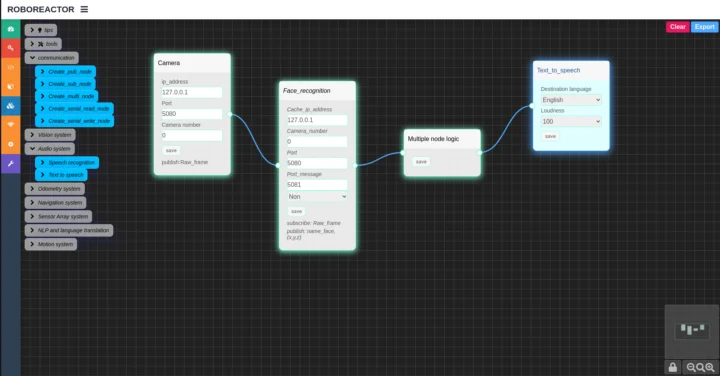
Another component of the solution is the URDF wizard where users can import the 3D model files as a ZIP archive and then they can assemble all parts in the web interface to create the mechanical part of the robot or automation system. URDF (Unified Robot Description Format) is an XML format used in Robot Operating System (ROS) tools such as rviz (Ros Visualization tool) and Gazebo simulator. [Update: I was told that the URDF wizard was not used with the functionality now merged with the Manufacturing AAI section]
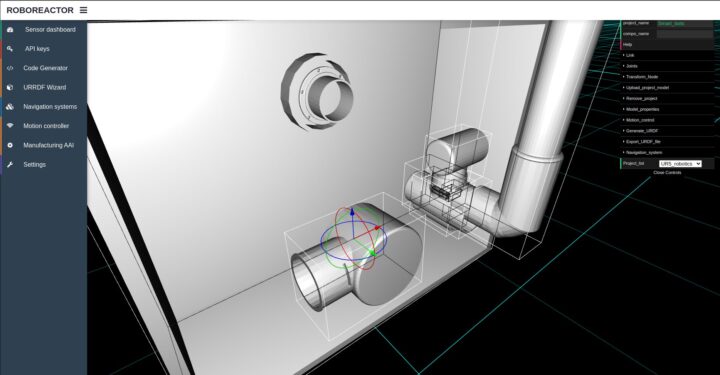
You can go further with various sections in the interface
- The Motion controller section to work on the robot controller based on STM32 or another microcontroller or remotely control your robot from the web interface
- The Navigation systems section to visualize the real-time point cloud mapping created by your robot’s sensors including Lidar, Radar, Sonar, WiFi localization, Beacons, and cameras, and track your robot’s movements and coordinate multiple robots to create a swarm.
- The Manufacturing Assistant AI (AAI) to design robots and automation systems by simply talking to an AI powered by Llama2 or Llama3.2 to create an entire project with the required hardware, code, and components.
You’ll find more details in the documentation although it still needs some work since parts are still difficult to understand… They have not focused on marketing either so far, as I could not find any demo videos on YouTube, but Chanapai Chuadchum, CEO of Bangkok-based Roboreactor, does share some public videos on Facebook from time to time. I re-uploaded one of the most recent ones on YouTube that shows how part of the system works.
It’s free to try for 30 days, but there are only paid plans starting at $25 per month for the Basic plan, $30 per month for the Professional plan, and soon $46 per month for the Enteprise plan. They look similar except for the Llama version used and the level of “electronic components control”. I just don’t know what the latter means exactly.
When I tried, it did not like the cnx-software.com email address I used (maybe because of the hyphen) and recommended a hotmail.com address instead. I managed to register, but bear in mind that you need to provide a credit card for the trial and would have to manually cancel before the renewal date if you don’t wish to carry on with the service. More details can be found on the project’s website.

Jean-Luc started CNX Software in 2010 as a part-time endeavor, before quitting his job as a software engineering manager, and starting to write daily news, and reviews full time later in 2011.
Support CNX Software! Donate via cryptocurrencies, become a Patron on Patreon, or purchase goods on Amazon or Aliexpress


